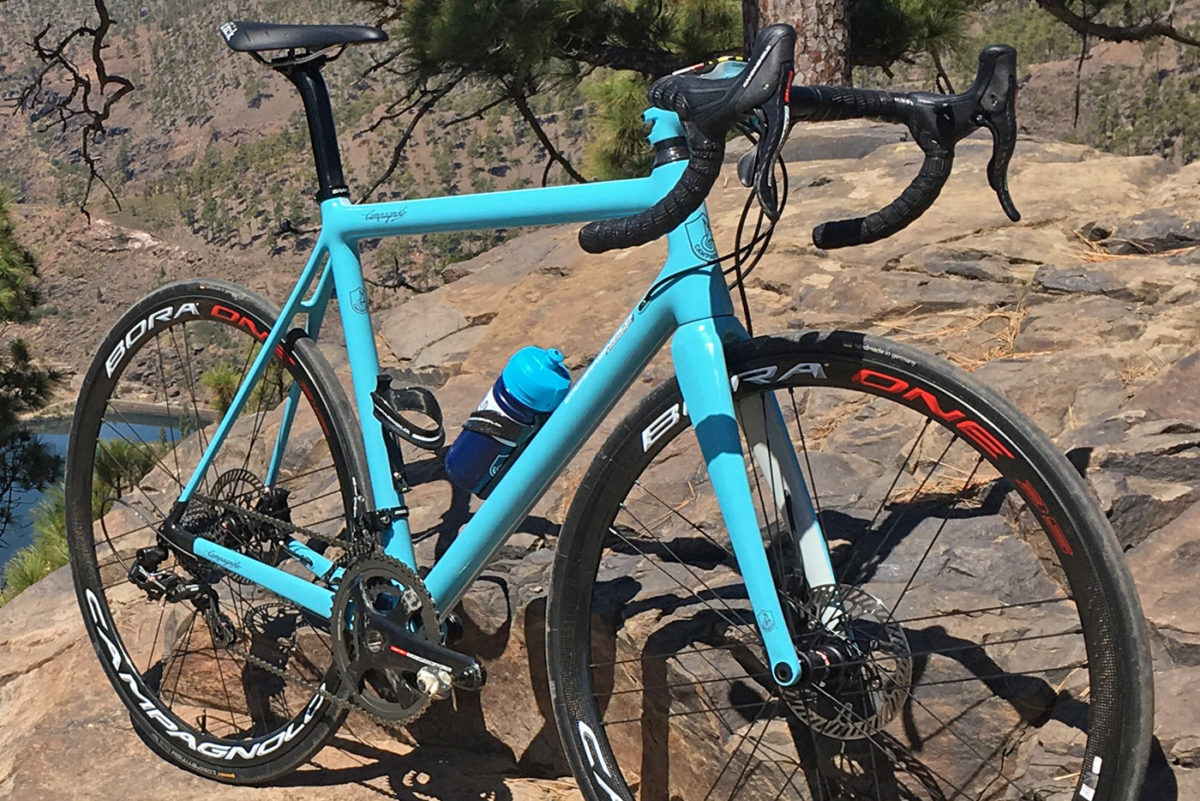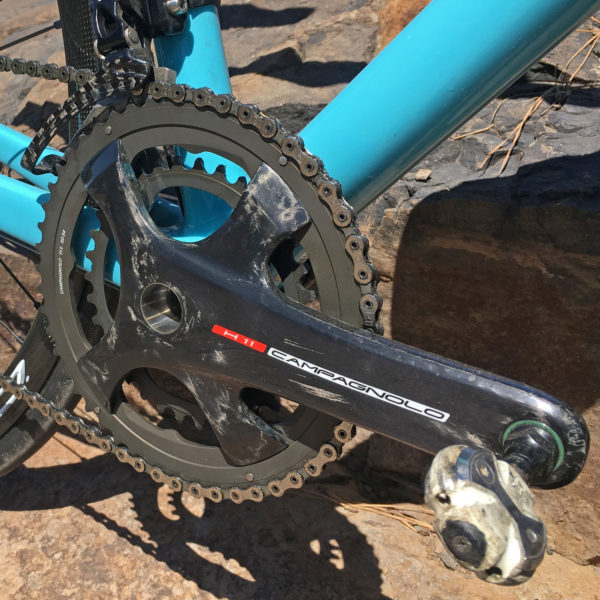We won’t lie, our first thought when hearing that Campagnolo had not one, but two new disc brake-specific road cranksets was something along the lines of “You’ve got to be !*%$ing kidding me!” The last thing we need is another new standard and less cross compatibility, am I right? But then, like the progression of most well thought out tech, when we learned more we started to wonder why other companies who’ve been selling road disc components on the market for the last couple of years hadn’t done the same thing…
 Campagnolo has been unburdened by history (and inertia) as they developed their disc brake project. Having never produced their own hydraulic disc brake systems before. And having never developed 12 x 142mm wheels until now, they came at it with a fresh outlook.
Campagnolo has been unburdened by history (and inertia) as they developed their disc brake project. Having never produced their own hydraulic disc brake systems before. And having never developed 12 x 142mm wheels until now, they came at it with a fresh outlook.
And looking at it analytically, it’s pretty obvious that if you are going from 130mm road hub spacing to the nominal 135mm hub spacing of the going 12×142 thru-axle standard and you keep your rings in the same place, the chainline relationship of cassette to chainring is no longer going to be perfectly aligned where you wanted it. Campagnolo is a stickler for precise shift performance, so just moving the cassette outboard an extra 2.5mm wasn’t acceptable to them when they had the ability to easily adapt to the new alignment.
It is exactly the same issue that has just taken hold on the mountain bike side of things with Boost spacing. (Sure Boost is an extra 6mm, vs. road disc’s additional 5mm.)
Clearly the difference is tiny. Campagnolo didn’t say how far their new chainrings were moved outboard to maintain ideal alignment, so we did the simple math. 5mm wider hubs. That moves the cassette 2.5mm outboard. So the chainrings just need to move the same 2.5mm outboard to again line up with the cassette. Ok, that is small, and explains why Campy said they were able to make the change without impacting the 145.5mm Q-factor of their cranks.
Clearly with that little difference it probably doesn’t make sense to sell your Super Record cranks and buy a new set of H11s, but if you are buying a new groupset, it might as well come with a crankset spaced to align with your rear wheel. That will be especially important on disc brake road bikes with very short chainstays. We’ve already seen that some disc brake race bikes have chainstays shorter than recommended by current road disc brake component makers Shimano & SRAM.
The new disc brake specific cranksets will come in two varieties: H11 carbon & Potenza 11 aluminum.
The H11 DB crankset with its carbon arms will be available by the end of My 2017, and sell for 650€ and come in 170, 172.5 & 175mm arm lengths and 50/34, 52/36 & 53/39 chainring combinations using Campy’s double standard BCD that has separate bolts for each chainring. The aluminum Potenza 11 Black DB crankset will sell for just 255€ in the same size combinations, and be available from June 2017. A silver version is expected to make it to market in August. Interestingly it looks like the new cranks will use Ultra-Torque, phasing out Power-Torque.
There’s still more to cover in depth with the arrival of the Campy disc brake project. Keep abreast of our full Campagnolo disc brake groupsets coverage here:
- Campagnolo road hydraulic disc brakes overview
- H11 carbon in depth – EPS & Mechanical levers and calipers detailed tech
- Potenza 11’s alloy disc brake solution
- Shamal Ultra alloy 2-Way Fit tubeless disc brake wheels
- Bora One carbon tubular & clincher disc brake wheels
- Campy H11 mechanical long-term review
*note: Euro pricing does include VAT. The previous reference to the exclusion of VAT was incorrect. We apologize for any confusion.


